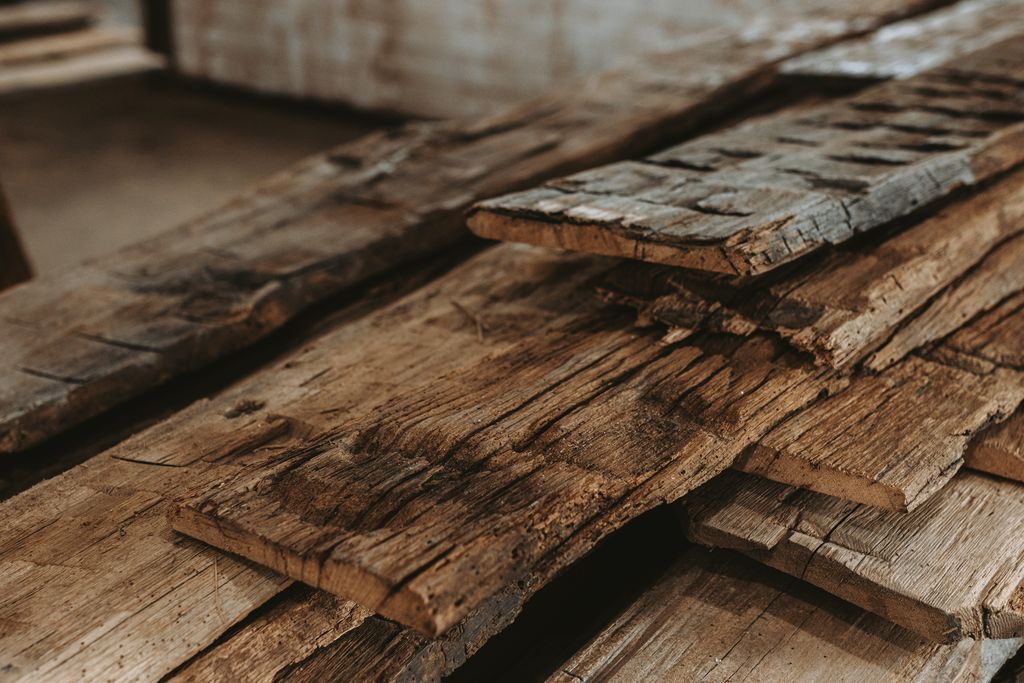Rare Antique Wood Species to Bring History into Your Home
Find rare woods that bring history and warmth into your home.

Ever wonder what stories your home could tell if its walls were made from wood that’s been around for centuries? Some woods that were once common in American history are now rare or impossible to harvest. These antique wood types carry the legacy of long-lost forests and past generations, making them a special connection between today’s homes and history.
In this blog, discover how these extraordinary woods can bring authenticity, character, and a deep sense of heritage to your home.
Antique Wood Species
American Chestnut
Before a devastating blight in the 1900s wiped out the species, American chestnut trees dominated Eastern forests. Builders valued this wood for its straight grain, natural resistance to decay, and durability.
Now, American chestnut is only available as reclaimed lumber salvaged from old buildings. Its grain patterns and shades, ranging from honey to deep brown, make it a sought-after material for restorations and unique interior designs. This wood’s rarity adds to its charm and value.
Heart Pine
Longleaf pine once covered 90 million acres in the South, producing trees with dense, strong heartwood known as "heart pine." This wood became a staple for construction due to its strength and rich beauty.
Old-growth heart pine is no longer produced, and only reclaimed wood from past centuries showcases its distinct qualities. Its amber and red tones deepen over time, while the tight growth rings reveal trees that took hundreds of years to mature. These characteristics make antique heart pine an irreplaceable material for projects requiring enduring strength and character.
Old-Growth Fir
Massive Douglas fir trees once filled forests in the Pacific Northwest, creating some of the finest timber available. This old-growth wood has vertical grain patterns and exceptional stability that modern, fast-grown fir cannot match.
Reclaimed old-growth fir often comes in stunning dimensions, like beams up to 12x12 inches, which today’s lumber mills rarely produce. Its natural resins and tightly packed grain give it strength and a unique appearance, with colors ranging from pale yellow to deep amber.
Eastern White Pine
During the colonial era, Eastern white pine was used for ship masts and the framing of buildings. Trees from old New England forests provided clear, straight planks that were both durable and easy to work with.
Reclaimed Eastern white pine often comes in wide boards with stunning patinas and marks developed over centuries of use. These historical characteristics make the wood perfect for projects that blend past and present.
Wormy Chestnut
After chestnut blight killed most American chestnut trees, many remained standing and attracted insects. This resulted in wormy chestnut, a wood with unique patterns of tiny tunnels throughout its grain.
These insect-made designs make each piece of wormy chestnut special. Its mix of character and chestnut’s natural beauty makes it ideal for interiors where its distinctiveness can shine. With wormy chestnut, every board tells a complex story.
Rare Antique Oak
Antique oak, sourced from white oak and other species in virgin forests, often has qualities missing in modern oak. This includes intricate grain patterns, tight growth rings, and quarter-sawn textures.
The density and tannins in these old-growth trees give the wood not only beauty but also great durability. Depending on the region, antique oak can show unique traits shaped by climate and soil, adding more depth to its story.
Historic Tropical Woods
Historic structures sometimes incorporated imported tropical woods, which are now highly restricted or endangered. Builders used these dense and richly colored woods for special decorative purposes because of their beauty and durability.
Antique tropical timbers are rare treasures, showing stunning grain patterns and natural colors. These add a layer of sophistication to any design while honoring both historical craftsmanship and environmental responsibility.

How to Identify Rare Antique Wood?
Identifying antique wood requires expertise. Characteristics like grain patterns, the spacing of growth rings, and aging signs help professionals determine authenticity. Documentation can confirm a wood’s origin, but hands-on inspection remains critical. Since these materials are valuable, professional authentication is a wise investment if you're incorporating them into a project.
Why Are Rare Antique Woods a Good Investment?
As these wood species become harder to find, their value increases. They combine history, beauty, and durability, making them highly desirable. Investing in antique wood is not just functional, but also adds a layer of aesthetic and cultural value to your property.
Our Experience with Rare Woods
At Bay & Bent, our work restoring barns often reveals rare wood species from a time when forests were untouched. We've salvaged American chestnut beams with legendary grain and heart pine timbers more solid than anything modern forests can produce. Each project reminds us of these woods’ irreplaceable value and historical significance.
Final Thoughts
When you use rare antique wood in your projects, you honor the forests and craftsmen of the past while creating spaces with deep stories. These woods are more than materials; they link your home to history.
By choosing these woods carefully, you celebrate their legacy and preserve their unmatched beauty for future generations to enjoy.









